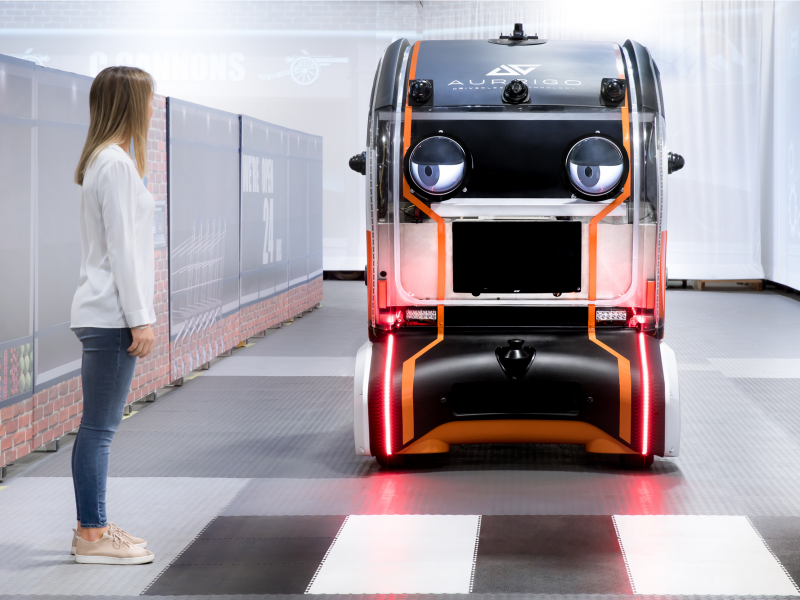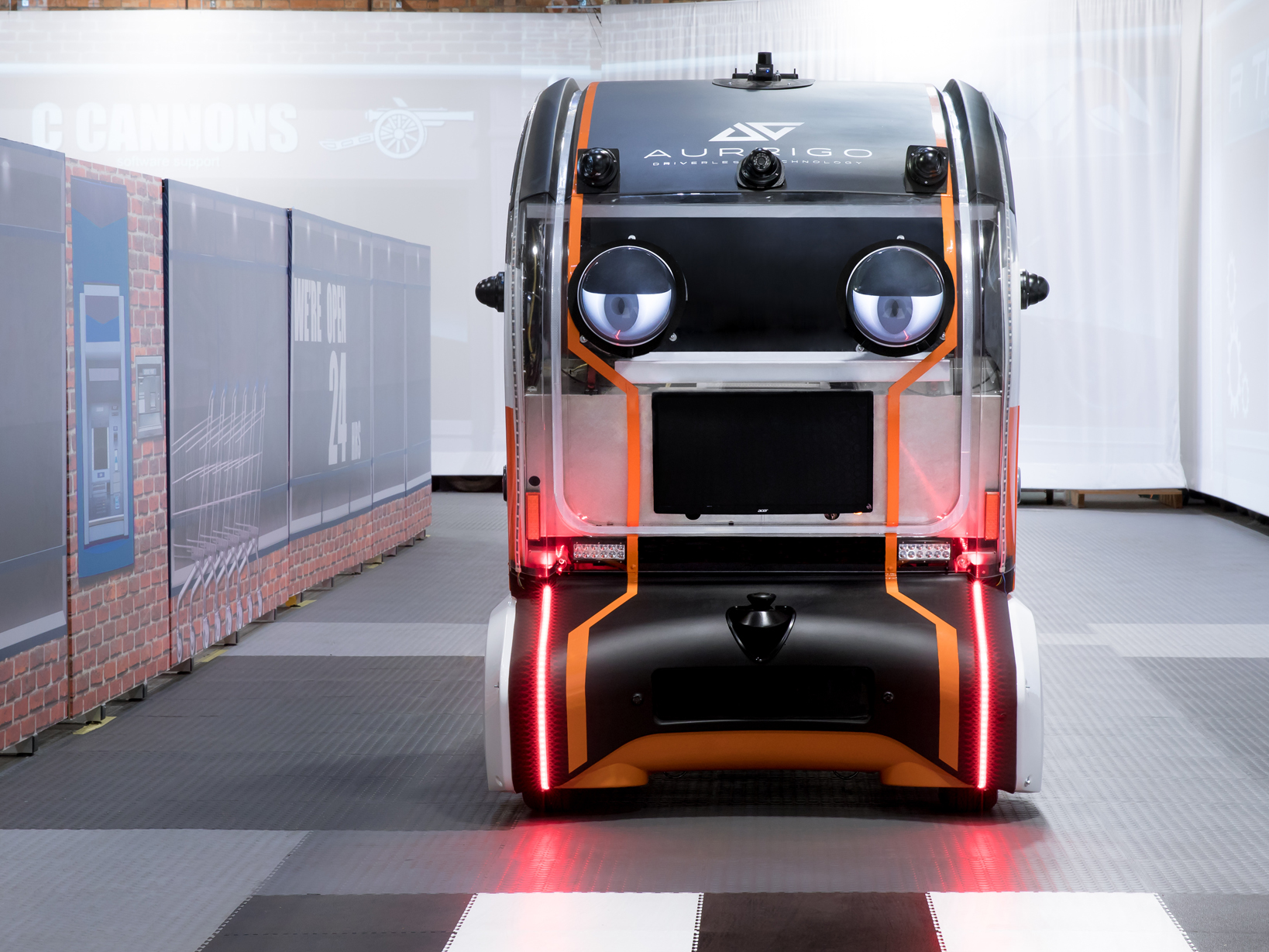- Jaguar Land Rover put “virtual eyes” on self-driving pods to interact with pedestrians on the road.
- The “eyes” are a combination of work between engineers and cognitive psychologists to research human trust in autonomous vehicles.
- Visit BusinessInsider.com for more stories.
Jaguar Land Rover put “virtual eyes” on its self-driving pods to measure how much trust people have in autonomous vehicles.
The autonomous pods run on a test street set and make direct “eye contact” with pedestrians to signal intent. Engineers then record the trust levels in the 500 test pedestrians before and after “eye contact” is made to discover if people have enough confidence in whether the car will stop for them.
Studies have shown that 63% of pedestrians and cyclists say they’d feel less safe with autonomous vehicles on the road, according to the automakers. Jaguar Land Rover hopes that the research will provide insight into how much “information” self-driving cars should share to increase trust in the vehicles.
Read more: This custom tiny home on wheels was made from a Ford Transit van
The project plays off of the "second-nature" urge that pedestrians have when looking at the driver of a car before stepping out into the road.
"Understanding how this translates in tomorrow's more automated world is important," a research manager at Jaguar Land Rover's Future Mobility project, Pete Bennett, said in a prepared statement.
"We want to know if it is beneficial to provide humans with information about a vehicle's intentions or whether simply letting a pedestrian know it has been recognized is enough to improve confidence."
Check out the "eyes" that have engineers and cognitive psychologists working together:
Jaguar Land Rover put the “virtual eyes” on its self-driving pods to interact with pedestrians on the road.

It makes eye contact with pedestrians to “signal intent.”

The “eyes” are a combination of work between engineers and cognitive psychologists to research human trust in autonomous vehicles.

The pods run on a test street set and the behavior of pedestrians waiting to cross the road is analyzed.

Engineers record trust levels before and after “eye contact” is made with the pod.

Studies have shown that 63% of pedestrians and cyclists say they’d feel less safe with autonomous vehicles on the road.

“It’s second-nature to glance at the driver of the approaching vehicle before stepping into the road,” Bennett said in a prepared statement. “Understanding how this translates in tomorrow’s more automated world is important.”

“We want to know if it is beneficial to provide humans with information about a vehicle’s intentions or whether simply letting a pedestrian know it has been recognized is enough to improve confidence.”


